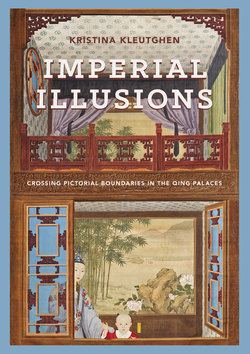Читать книгу Imperial Illusions - Kristina Kleutghen - Страница 8
На сайте Литреса книга снята с продажи.
ОглавлениеAlso at the Palace Museum, Lei Yong, Wang Zilin, Zhang Shuxian, Madame Guo, Liu Lu, and Zhou Yaoqing freely offered their time and assistance, as did Dong Jianzhong of the Qing History Institute. At The Beijing Center for Chinese Studies, Father Ron Anton, S.J., and Dr. Russell Moses were invaluable in allowing access to the library that carries on the ideals of the Jesuit mission in China. At the Shenyang Palace Museum, Vice-Director Liu Ning took significant time out of her busy schedule to facilitate multiple painting viewings fueled by delicious meals. At the National Palace Museum in Taiwan, numerous librarians helped with references. Chiu Shi-hwa and Lai Yu-chih (now of the Academia Sinica) are due particular thanks for helping me acquire an essential image permission.
I completed much of the original work for this project during a Mellon fellowship at the Needham Research Institute (NRI), where I wish especially to thank John Moffett, Sue Bennett, Christopher Cullen, and Catherine Jami for their generosity and collegiality. The time spent at the NRI has continued to pay dividends as I slowly metabolize the legacy of Joseph Needham, and the intersections between the histories of Chinese science and Chinese art. Professor Terry Kleeman and Michael Stanley-Baker, whose time at the NRI overlapped with mine, offered crucial insight into cave-heavens. At the School of Oriental and African Studies (SOAS), University of London, Lukas Nickel, Timon Screech, and Shane McCauseland facilitated a Research Associateship that allowed me access to the SOAS library. In addition to allowing me to present an early version of chapter 3 to their community, they offered wise counsel that greatly improved the project. Colleagues all over the world contributed here, particularly the Qing Art History workshop, who created a strong community both in person and online: Yeewan Koon, Lisa Claypool, Lihong Liu, Kaijun Chen, John Finlay, Nixi Cura, Francesca dal Lago, Philip Hu, Roberta Wue, Lihong Liu, Michele Matteini, and Stephen Whiteman. The chapters that Kaijun Chen and Lihong Liu read were improved immeasurably by their thoughts.
My colleagues at Washington University in St. Louis and the Department of Art History and Archaeology encouraged the completion of this project in a variety of ways, and I am grateful to Elizabeth Childs, William Wallace, Betha Whitlow, and Lindsey Derrington for their help. Robert Hegel offered advice, mentorship, and shared amusement over the varying quality of Qianlong’s poetry. Tony Chang miraculously procured texts that I could not travel to see, and sometimes did so on a moment’s notice. The Eighteenth- Century Interdisciplinary Salon welcomed a non-Westernist into their midst with open arms and generously offered their thoughts on early versions of the introduction and epilogue.
The funding I received for language study, research, and completion from a variety of sources is what made both starting and ending this project possible. To that end, I am grateful to Harvard University, the Fairbank Center for East Asian Research, the Harvard University Asia Center, the Blakemore Foundation, the Needham Research Institute, the National Endowment for the Humanities, and the Getty Research Institute for their support of this project. The College Art Association, Association for Asian Studies, and
